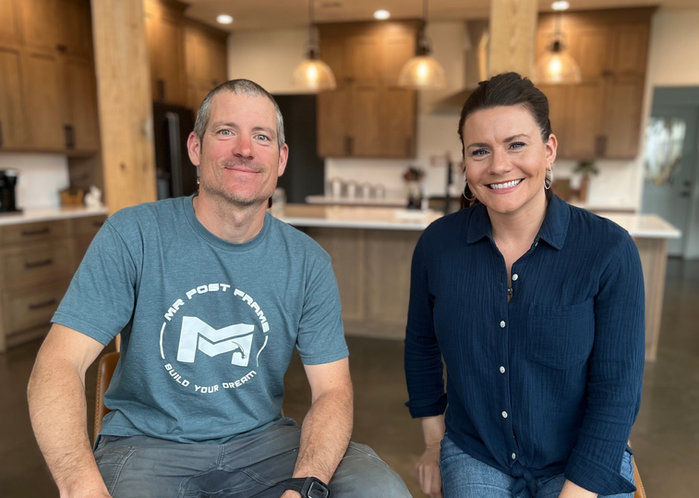Barndominium Versetta Stone | MAD County Standard | Part 19
- MR Post Frame
- Jan 12, 2024
- 3 min read
Hey there! So we are diving right into the Versetta Stone for our MAD County Standard project. Versetta Stone is one of our favorite products to use for our barndominiums because it looks great on your home, it is functional, and it is easy to install! Before we can install it though, we've got some prep work to do. Behind everything, we've got half-inch plywood, and we've added house wraps for waterproofing. Now, even though we already had house wrap, I decided to enhance it further by incorporating 30-pound felt or black tar paper. This not only adds an extra layer of waterproofing but also ensures that no white surfaces peek through behind the stone.

Moving on to the metal trim, this is a crucial step, especially because we're planning to have a metal ceiling. The idea is for the stone to seamlessly integrate with the ceiling, creating a cohesive look. Starter strips have been set up, providing a foundation for the stone installation. Above the door, I've introduced a 1/8-inch angle, about an inch and a half in size, drilled some holes, and painted it black. This angle serves as a sturdy resting place for the stone.
Now, let's get into the stone installation process. Utilizing starter strips, each stone has a clever design with a lip that effortlessly slides onto the strips. These pieces will be secured with screws or nails, but before that, it's crucial to check for levelness using a level tool. It's all about ensuring a seamless and visually appealing progression as the stones ascend.
Stacking Stones:
To achieve clean cuts on the stones, I've opted for a miter saw equipped with a segmented diamond blade. Additionally, I've implemented Rust-Oleum textured paint on the cut ends to blend them in seamlessly with the rest of the stone.
Tools For Cutting:

While Versetta Stone provides universal corners, specific situations call for unique solutions. In my case, working on each side of a door with limited space requires a bit of creativity. Rust-Oleum textured paint comes to the rescue again, providing a finishing touch that matches the stone's texture. When spraying, it's essential to position the finished side downward to avoid overspray.
Cutting Angles:
Angles are a critical aspect, and I've chosen to go with the standard 45-degree pitch for this porch. The miter saw is set accordingly, and for the finishing touch, I use an angle grinder with a cutting wheel. This method ensures precision in the cuts and maintains a clean and uniform appearance.
Top Piece:

For the top rows, I'm steering away from glue, opting instead for stainless steel trim screws. This not only offers a secure fit but also facilitates easier removal if necessary. When drilling holes for these screws, it's crucial to use a regular drill with a hammer drill bit, ensuring a clean and sturdy installation.
Cost Breakdown:
Wrapping up the Versetta Stone installation, the process, although demanding attention to detail, is certainly DIY-friendly. Starting level is key, and it's important to consistently check for levelness as you progress. While it might involve some adjustments, the end result is undeniably rewarding.

Additionally, I've developed a habit of using spray paint on cut ends. This isn't a mandatory step, but it adds a finishing touch by blending the cut ends with the overall color scheme. Feel free to drop any questions in the comments, and if you're enjoying this content, check back to see our daily blog posts.
Thank you,
MR Post Frame

Patreon Group:
Interested in tackling your build on your own? If you want to explore the possibility of being your GC or self-building, our Patreon membership is for you! It's a community of like-minded people offering support, discounts, Q/A, and more.